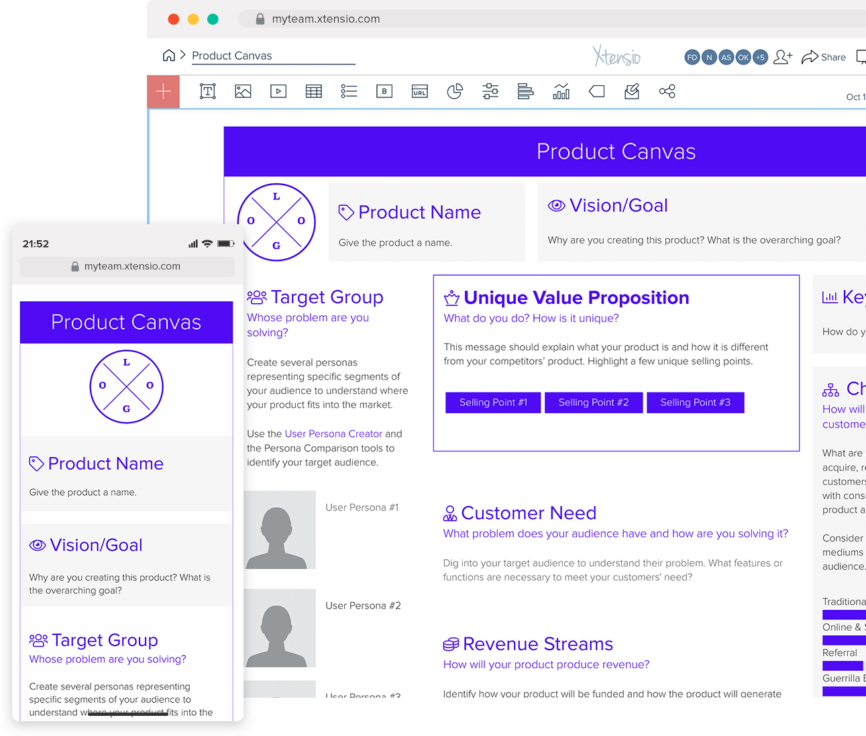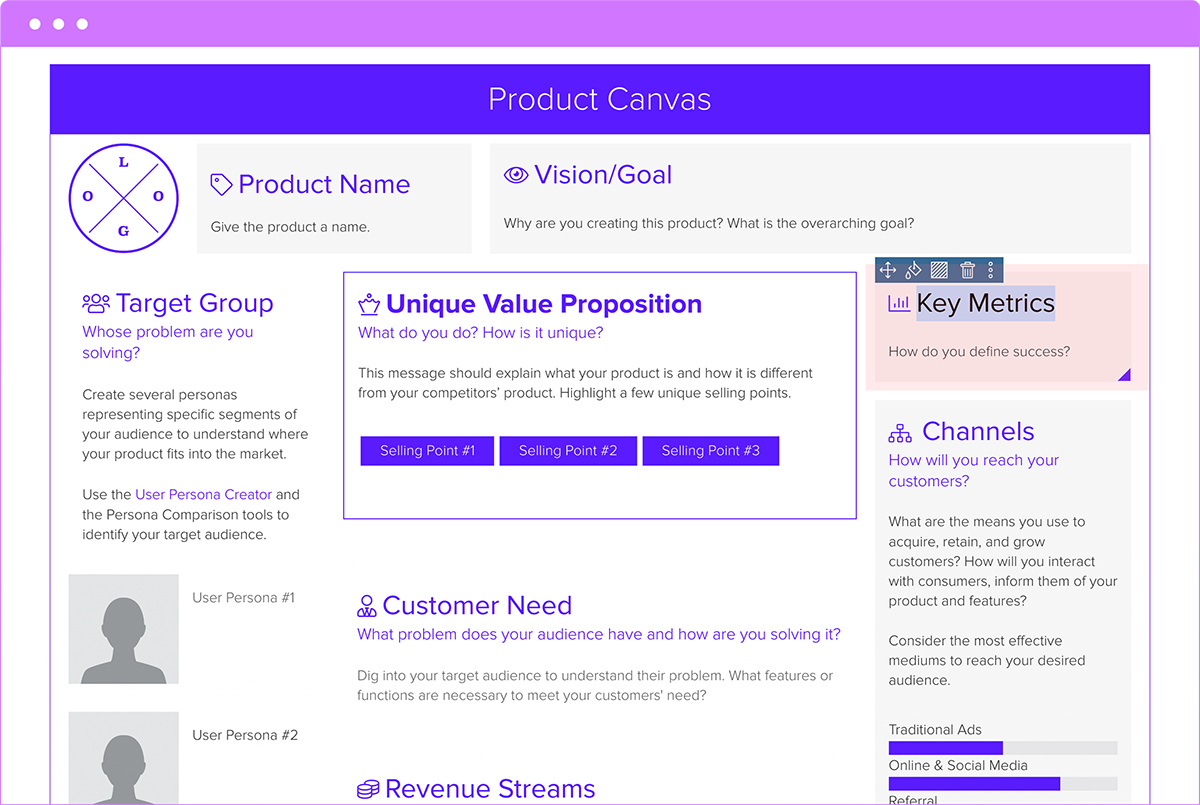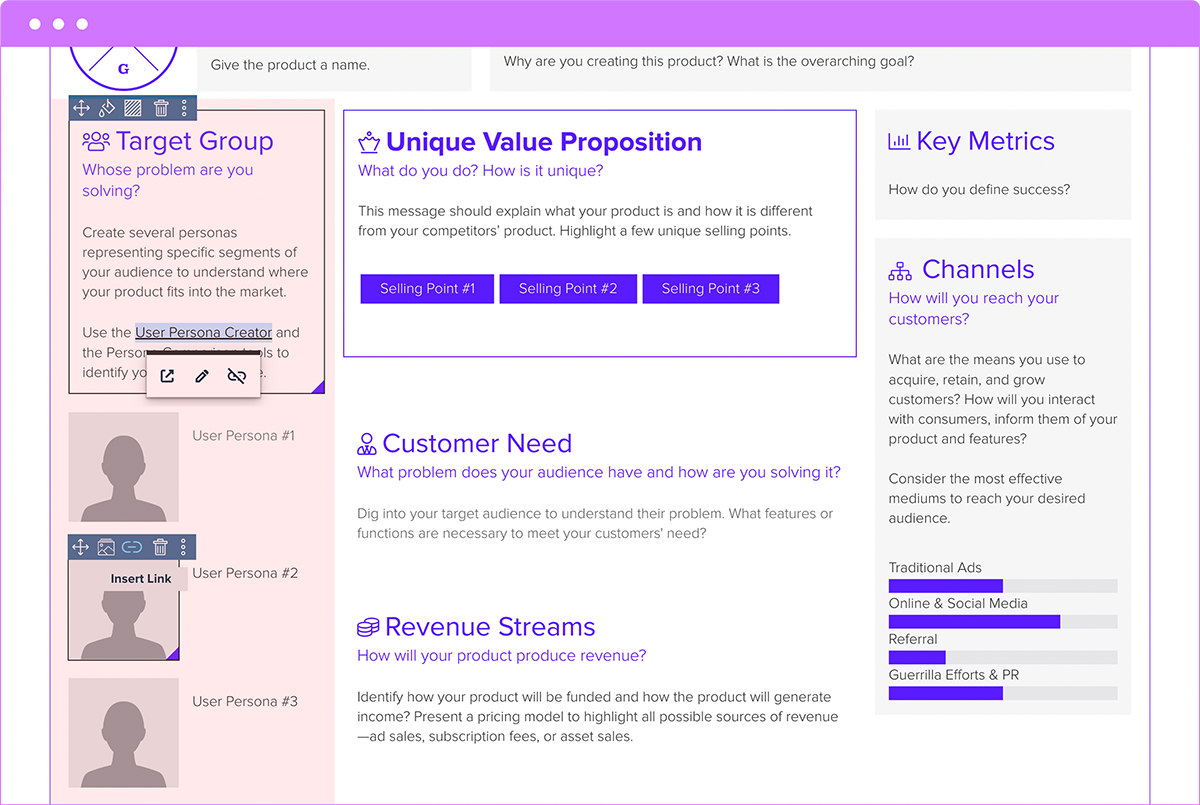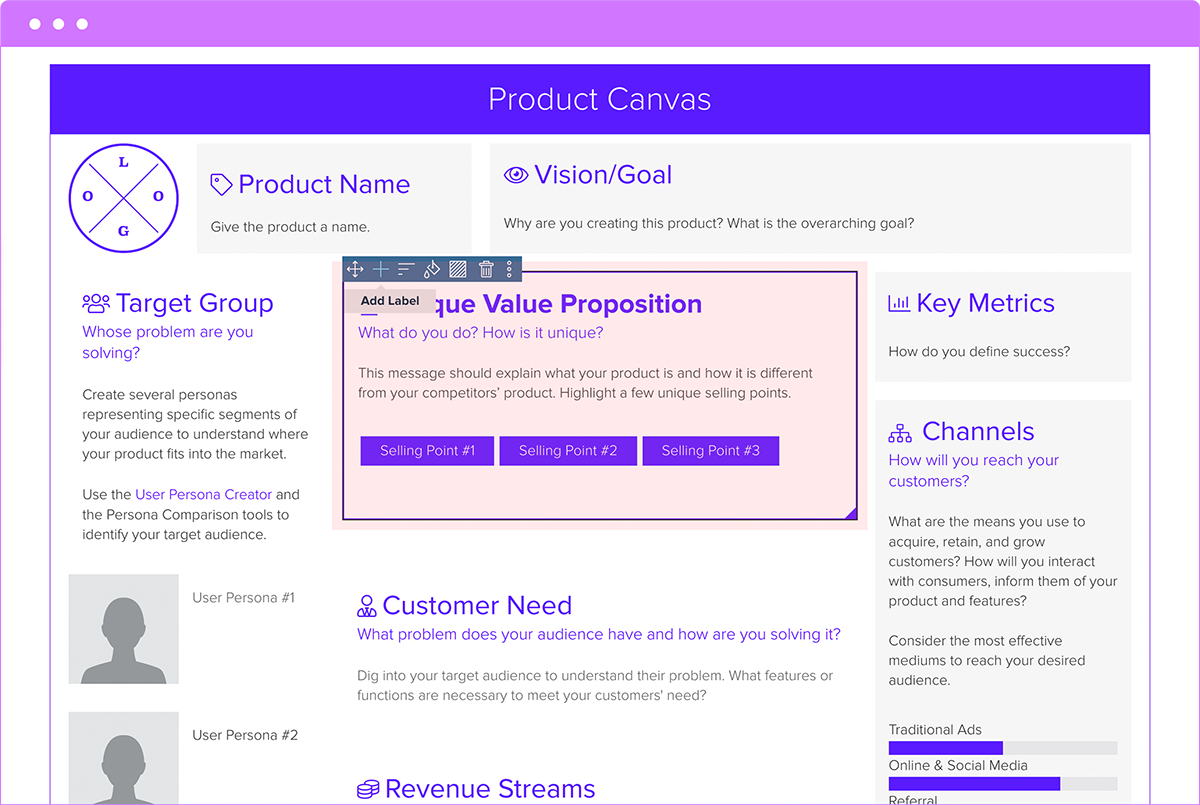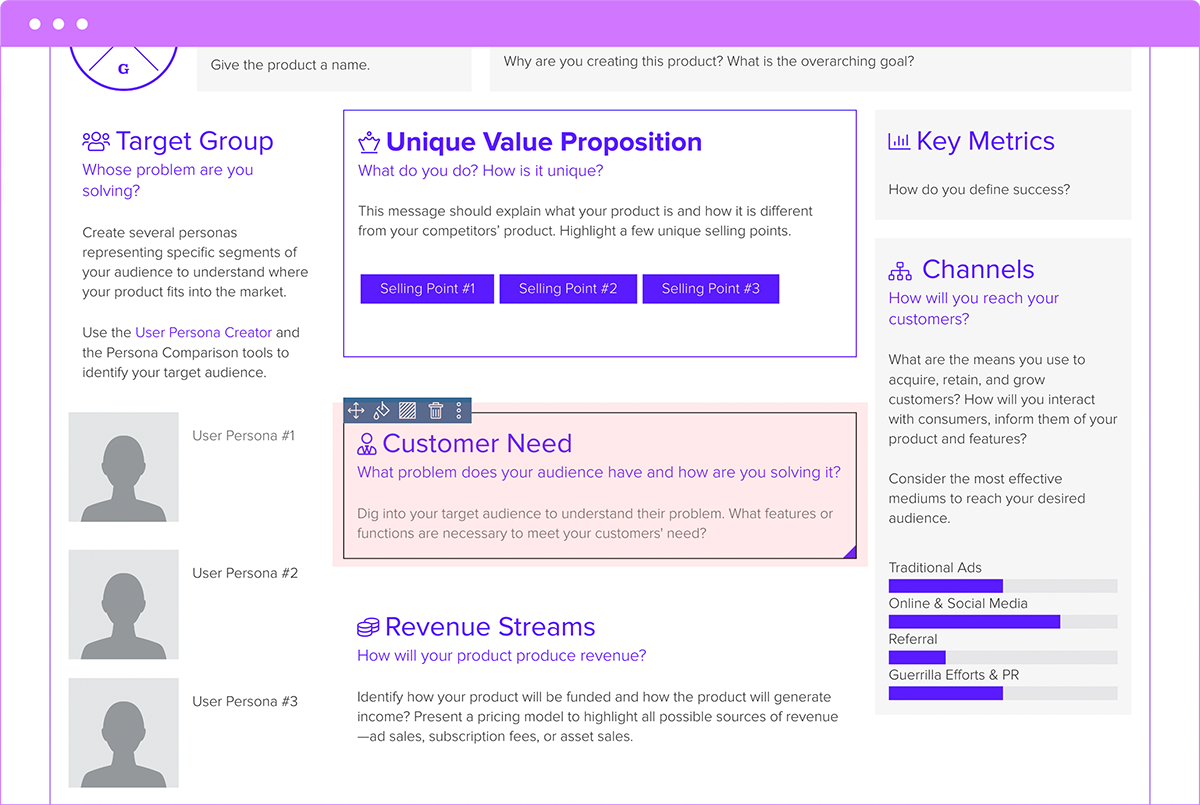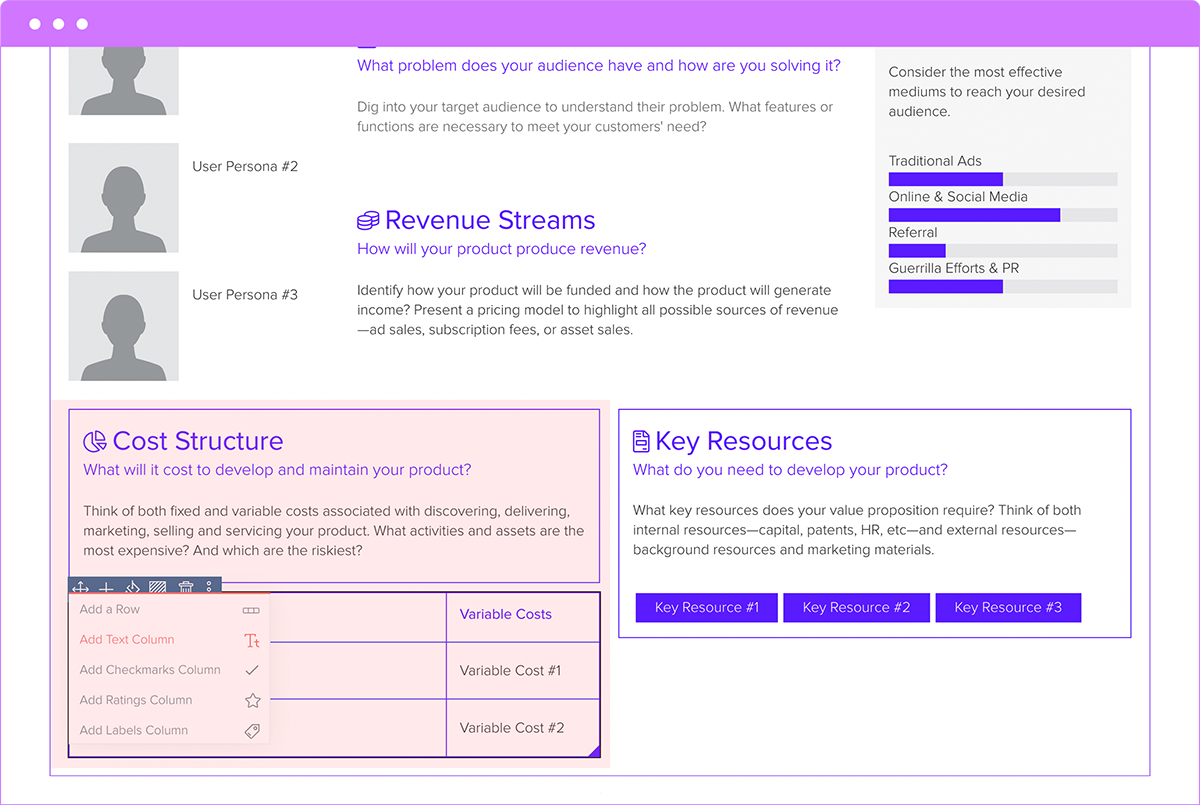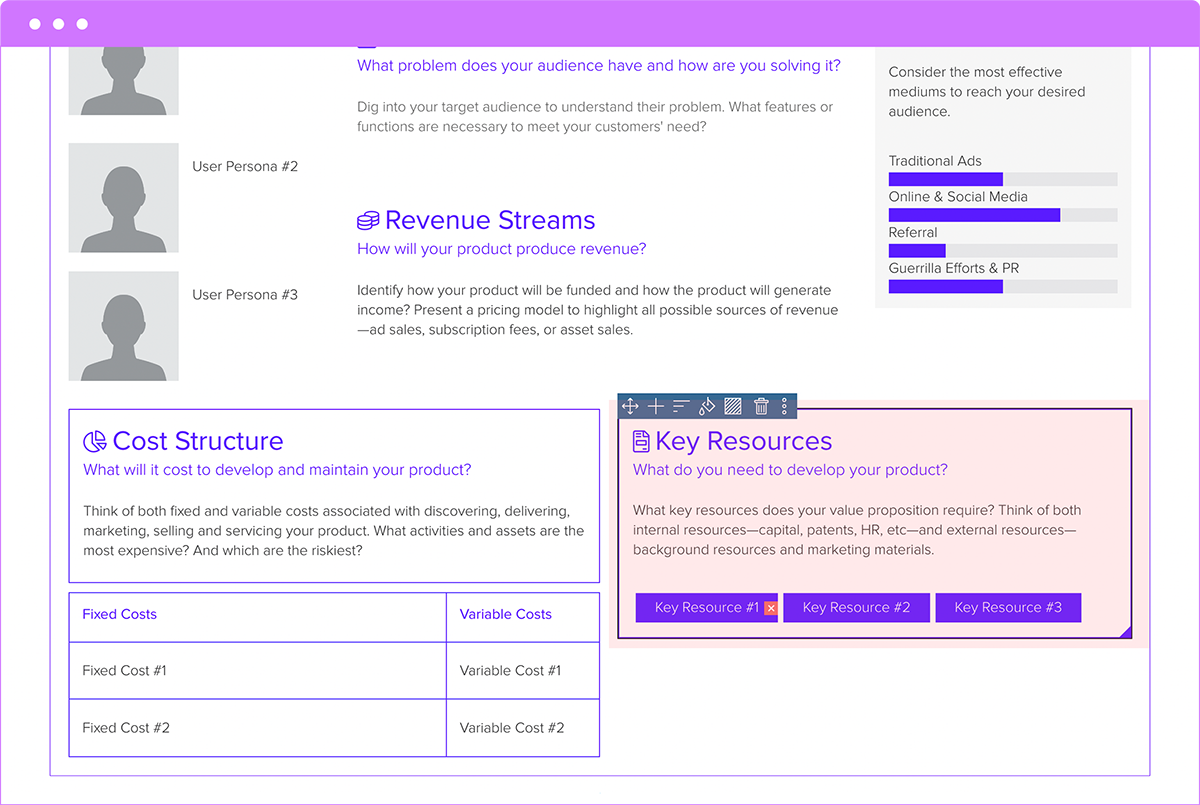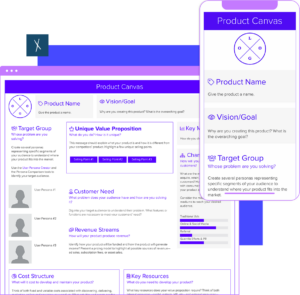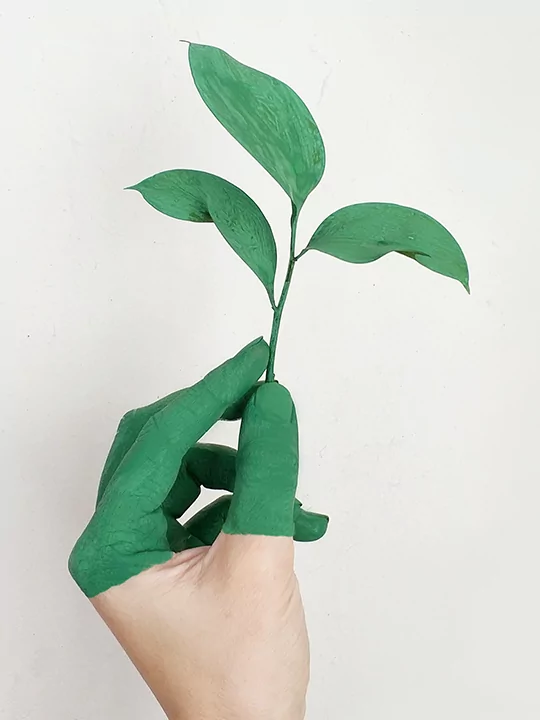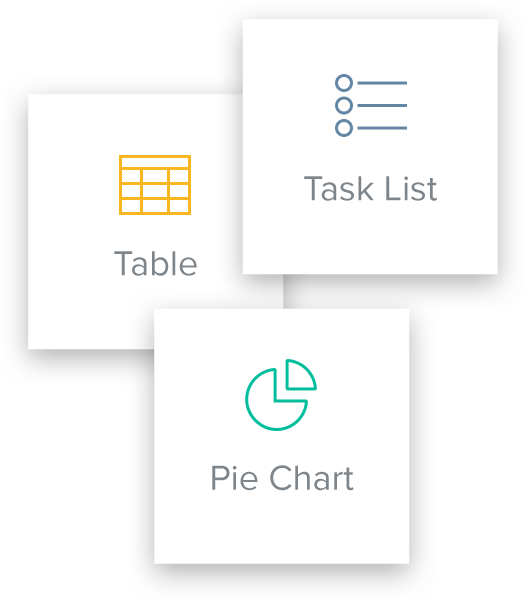How To Create A Product Canvas (With Template & Examples)
Updated by Xtensio
The product canvas displays key pieces of information necessary to build a new product and organizes product discovery, backlog management, and release planning. This exercise helps product owners validate solutions, align with teams and get your idea ready for development. Use this step-by-step guide to create your product canvas, easily. Explore this template.
Xtensio is your team space for beautiful living documents.
Create, manage and share business collateral, easily.
Table of Contents
What is a Product Canvas?
The product canvas is a planning tool designed to help build products that have a great user experience by focusing on feature development that answers your target users’ needs. The product canvas was introduced by Roman Pichler in 2012 and combines agile methodologies with lean UX principles to help validate product vision and product solutions by complementing user stories with personas, storyboards, scenarios, design sketches and other UX artifacts. The product canvas supports Lean UX by combining user-centered design and agile techniques and it is designed to work with Scrum, Lean Startup, and Business Model Generation.
Why do I need a Product Canvas?
Product canvases bring together key pieces of information necessary to create new products:
- The needs of your target users and customers with user stories and personas, storyboards and different user scenarios.
- The competitive market landscape and your product’s unique value proposition.
- Captivate customers with visually engaging, interactive content that is easy to understand.
- The product’s functionality and design.
- Cost structures, marketing and sales funnels.
- And the user interaction with the product.
This tool is intended to help your product and engineering teams state your ideas and assumptions, test them, and integrate insights into your product roadmap.
Outline your product name and vision.
First, identify the core goal of creating this new product. Your product vision should be focused on the long-term concept of your product. A vision is concise, compelling, and communicates the core purpose of the product. Why are you creating this product? What does your ideal vision of success look like for this product? Choose a product name that speaks to its purpose.
Define key metrics of success.
In this section, you’ll define key metrics that will direct your product development. How will you define the success of this product? How does your plan map to overall business goals? Focus on metrics first to ensure the product and engineering teams both understand what they are working towards – the product’s success is only possible with everyone working towards the same goal.
Identify your target audience and customer need.
Once your product vision has been defined, define the WHO and WHY: your target audience and what they value. Whose problem are you trying to solve?
Create several personas representing specific segments of your audience to understand where your product fits into the market. This will prepare you to outline your product’s unique value proposition and customer needs.

Quick Tip: Use Xtensio’s User Persona Creator and Persona Comparison tools to identify your target audience.
Define your unique value proposition.
Once you understand who your target audience is, you’ll define your unique value proposition. This should speak directly to your ideal persona(s).
What exactly does your product do? What makes it stand out from the competition? Your value proposition should clearly state what your product is and how it differs from the products of your competitors. Use the label module to draw attention to a few important selling elements about your unique offer.
Understand your customer’s need.
What is the unique problem your audience has? Dig into your target customer persona to understand their problem and need. What features or product functions are necessary to meet this need? How does your unique value speak to this need?
Determine what channels to reach your audience
You’ll figure out how to reach your customers now that you know who they are and what your unique value proposition is. What methods do you employ to recruit, retain, and develop your consumer base? How will you communicate with customers and inform them about your product’s features and benefits?
Consider the most effective mediums to reach your desired audience: traditional ads, email campaigns, online & social media, referral, guerilla marketing and PR efforts.
Identify your revenue streams.
How will your product produce revenue? Determine how your product will be funded and how the product will generate income. Then present a pricing model to highlight all possible sources of revenue: ad sales, subscription fees, or asset sales.

Quick Tip: Try the SaaS pricing strategy exercise template to help uncover your product’s pricing model.
Define your product’s cost structure.
Keeping your revenue streams in mind, determine what it will cost to develop and maintain your product. Use a table to outline both fixed and variable costs associated with discovering, delivering, marketing, selling and servicing your product. What activities and assets are the most expensive? And which are the riskiest?
Highlight your key resources.
Last but certainly not least, you’ll identify the key resources you’ll need to develop your product. What resources does your value proposition require? Think of both internal resources (capital, patents, HR, etc) and external resources (background resources and marketing materials).

Quick Tip: The competitive analysis template would be a good exercise to determine resources that other competitors in your market are utilizing to meet their growth goals, and in turn, help you plan for better monetization.
Share your product canvas as a link, monitor & evaluate
Add team members from each department to collaborate on the product canvas with you. When you’ve finished creating your product canvas with Xtensio’s editor, you can send the live link to your folio to share it as a responsive webpage (and add password protection), export a PDF and post it on your bulletin board and continuously optimize with new learnings. The product canvas template is adaptable just like other Xtensio tools, it can and should be repurposed, revisited, and revised regularly.
